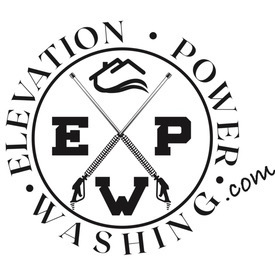When it comes to exterior cleaning, homeowners often ask, “Is power washing safe for my home?” The answer lies in understanding the differences between soft washing and pressure washing, two popular methods for sprucing up your property.
Soft Washing vs. Pressure Washing: The Basics
Soft Washing: This method uses low-pressure water combined with specialized cleaning solutions to break down dirt, mold, algae, and other contaminants. It’s gentle and ideal for delicate surfaces like roofs, siding, and painted areas. Soft washing ensures that fragile materials aren’t damaged during the cleaning process, making it a preferred choice for sensitive areas.
Pressure Washing: Employing high-pressure water, this method effectively removes tougher stains, grease, and accumulated dirt. It’s suitable for hard surfaces such as driveways, sidewalks, decks, and concrete. Pressure washing is powerful and time-efficient, making it excellent for areas that can withstand high pressure without damage.
Applications: Where to Use Each Method
Soft Washing: Perfect for roofs, siding, and painted surfaces, soft washing is particularly effective against organic growth like moss and algae. The lower pressure protects delicate materials, ensuring a thorough and long-lasting clean.
Pressure Washing: Ideal for hard surfaces, pressure washing quickly eliminates stubborn stains and grime from driveways, sidewalks, and decks. Its versatility makes it a go-to option for durable areas.
Effectiveness and Efficiency
Soft Washing: Though it might take longer to see results, soft washing’s cleaning solutions not only remove visible stains but also prevent mold and algae regrowth, providing a longer-lasting clean.
Pressure Washing: Known for its immediate impact, pressure washing quickly removes built-up dirt and grime, making it a time-efficient choice for robust surfaces.
Environmental Considerations
Soft Washing: Generally more environmentally friendly, soft washing uses biodegradable solutions designed to minimize harm to plants and animals.
Pressure Washing: This method uses more water and can cause runoff, potentially carrying contaminants into the environment.


Hi, this is a comment.
To get started with moderating, editing, and deleting comments, please visit the Comments screen in the dashboard.
Commenter avatars come from Gravatar.